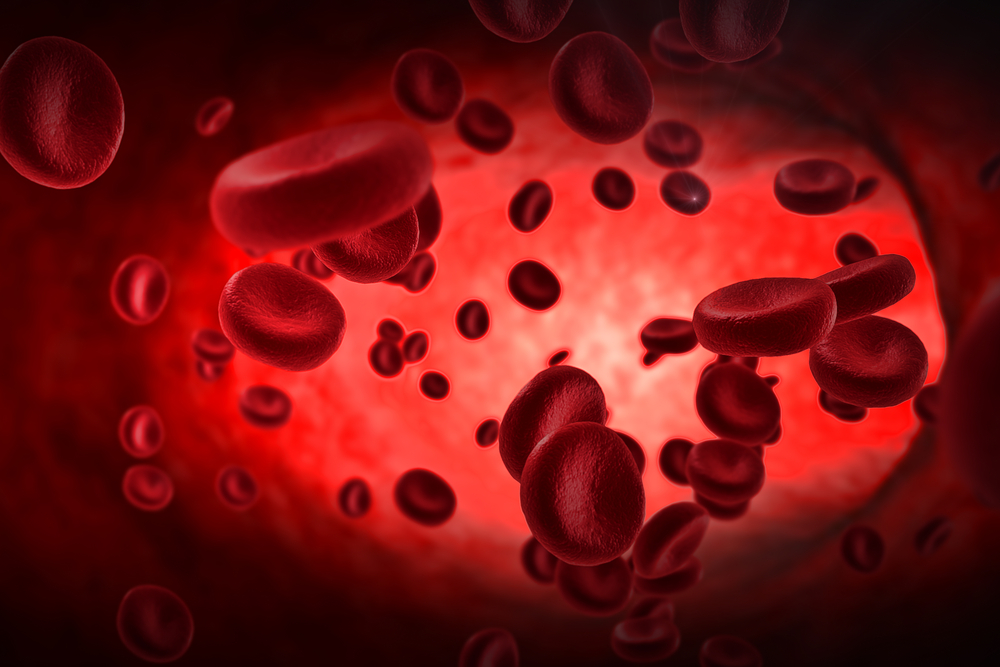Specific Blood Biomarkers May Be Used for PH Diagnosis, Study Suggests

Specific biomarkers are present in higher levels in the blood of people with pulmonary hypertension (PH), and could be used to aid in diagnosis, a study says.
Titled “Analysis of Novel Cardiovascular Biomarkers in Patients With Pulmonary Hypertension (PH),” the study was published in the journal Heart, Lung and Circulation.
PH can be caused by multiple processes, and its symptoms tend to be non-specific. This often leads to delays in diagnosis and, consequently, slowness in starting treatment. Such delays can be seriously detrimental to patients’ health.
Therefore, a team of researchers hypothesized that certain molecules that can be measured in the blood could be useful for diagnosing PH.
Specifically, researchers examined four biomarkers they thought might have clinical value: soluble suppression of tumorigenicity 2 (sST2); heart type fatty acid binding protein (H-FABP); soluble urokinase plasminogen activator receptor (suPAR); and growth-differentiation factor-15 (GDF-15). The first two — sST2 and H-FABP — are broadly associated with mechanical stress and damage in the heart. Meanwhile, suPAR and GDF-15 are linked to inflammation.
The team measured the levels of these potential cardiovascular biomarkers in blood from 88 PH patients with a mean age of 71 years, and in blood from 74 controls with a mean age of 58 years. The researchers noted that the PH group was significantly older, and had significantly higher rates of comorbidities, or other diseases, including type 2 diabetes, autoimmune disorders, chronic obstructive pulmonary disease, and coronary artery disease.
On average, the levels of all four biomarkers analyzed were significantly higher in the PH group, compared with the control one. The specific results were: H-FABP median 3.5 vs. 0.0 ng/ml; sST2 median 6364.6 vs. 5015.9 pg/ml; GDF-15 median 1829.3 vs. 514.1 pg/ml; suPAR median 4878.7 vs. 2227.0 pg/ml.
This also was true for brain natriuretic peptide (BNP), a previously-established marker of PH, which was measured as a positive control. The BNP median was 191.0 vs. 32.0 pg/ml.
Interestingly, some of the markers appeared to be linked to particular types of PH. For instance, GDF-15 and suPAR levels were highest among individuals with group 2 disease, which is PH due to left heart failure. Meanwhile, H-FABP and BNP were predominantly elevated among people with group 2 or group 3, which is PH due to lung disease or chronic low oxygen.
Given those results, the researchers proposed that these biomarkers could be used to help discriminate between precapillary (groups 1, 3, 4, and 5) and postcapillary (group 2) forms of PH.
sST2 levels were generally elevated among PH patients, but not among people in particular sub-groups. Thus, researchers suggested that sST2 “can be assumed as a general marker for pulmonary hypertension, regardless of the respective subtype.”
However, the team noted that this marker also has been linked to other heart problems. Therefore, sST2 levels need to be analyzed with caution for the particular diagnosis of PH, they said.
The researchers noted that some of the biomarkers analyzed were found to have statistically significant links to heart features, as measured by echocardiogram. These included right ventricular strain and systolic pulmonary arterial pressure. However, none of them were linked with average (mean) pulmonary arterial pressure.
The team concluded that “while sST2 constitutes a general biomarker of pulmonary hypertension regardless of the subtype, H-FABP, GDF-15, and suPAR represent indicators of postcapillary PH. Thereby, they could constitute potential discriminators between pre- and postcapillary PH.”
Future research is needed to determine what information can reliably be obtained from measuring these biomarkers. Investigators also must determine how that information could best inform clinical practice.







